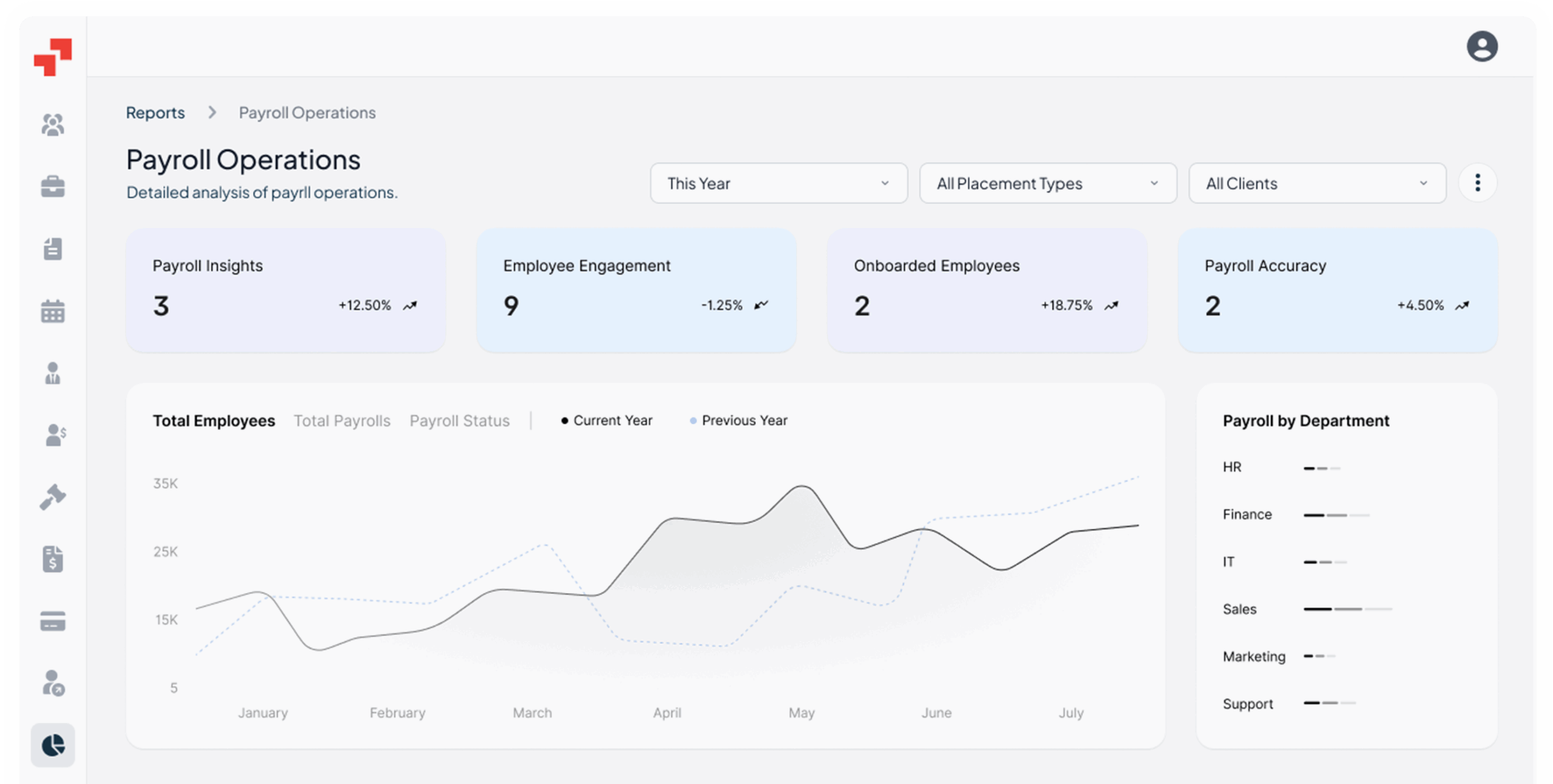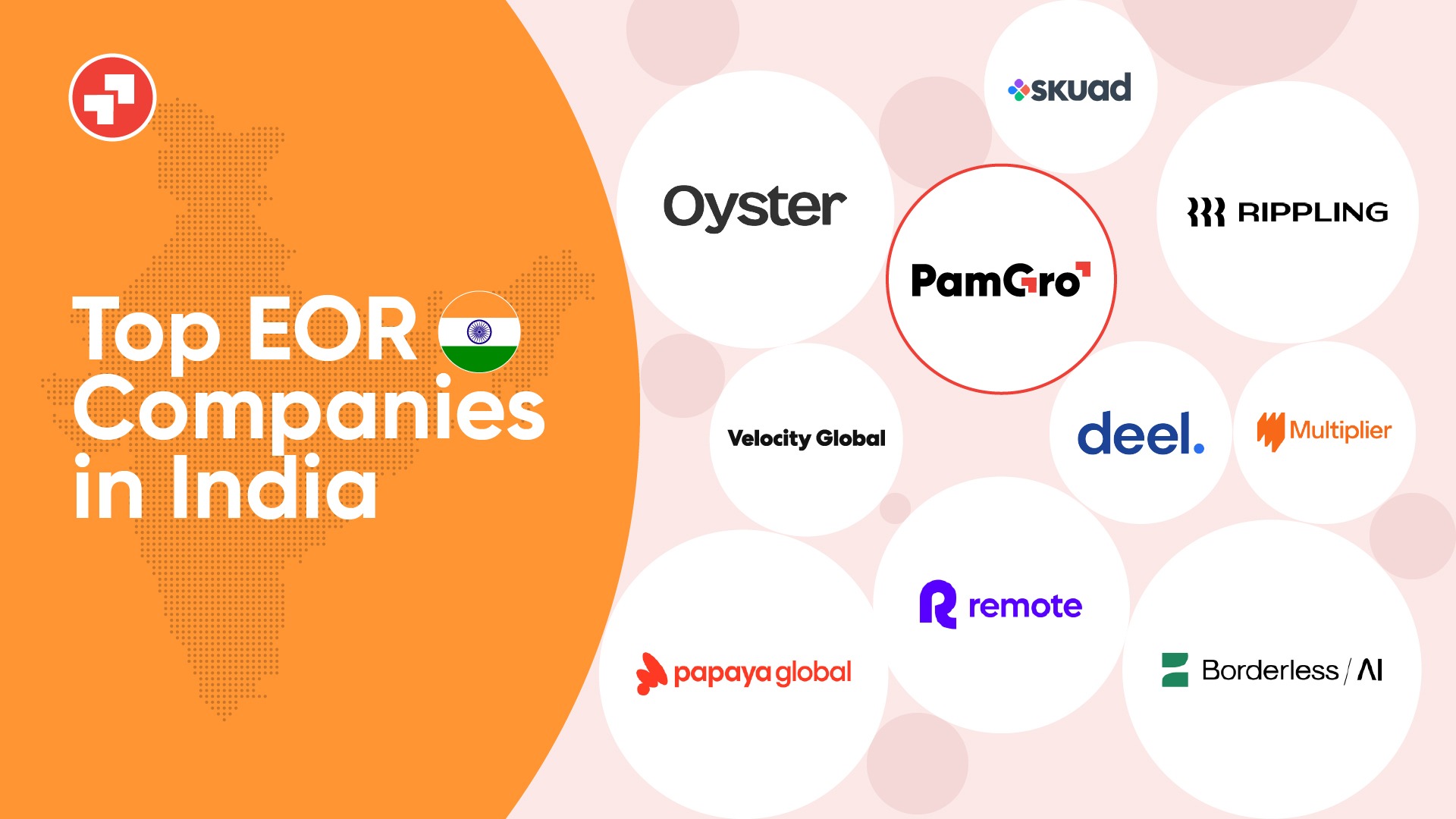Employee Cost Calculator - India [2025]
Instantly calculate the estimated total cost of employment in India, including taxes and employee and employer contributions.
1. What Are Common Salary Components in India?
Salaries in India are fixed payments employees receive for their work and are typically deposited at the end of every month. Although each company varies in structure and payments may differ accordingly, here are some of the more frequently encountered components that comprise an employee’s monthly compensation package:
- Basic Salary: The basic salary represents 35-50% of gross pay and is fully taxable, providing the basis for other benefits such as Provident Fund (PF) contributions, bonuses and allowances. Usually determined based on role experience and industry norms
- House Rent Allowance (HRA): HRA allows employees to cover housing costs. Employees living in rented accommodations may claim tax exemptions under Section 10(13A) of the Income Tax Act depending on certain criteria, such as rent amount and location (metro or non-metro cities). If an employee owns their home, however, HRA becomes fully taxable.
- Leave Travel Allowance (LTA): LTA is offered to employees to cover travel expenses they incur during official leave. It is tax-exempt under the Income Tax Act provided certain criteria are met, and it is, therefore, an invaluable benefit for employees travelling during their time off. Essentially, it’s the ultimate perk.
- Special Allowance: This allowance provides an additional payment above and beyond Basic Salary to cover personal or professional expenses that don’t count towards retirement benefits such as Pensionable Benefits (PF). Rather, this allowance is fully taxable.
- Bonus: A bonus is an incentive awarded to employees based on their performance or company profitability, usually fully tax-deductible and may vary according to company policies. Bonuses serve as motivational tools by rewarding outstanding work performed.
- Employee Provident Fund (EPF): EPF is a retirement savings scheme where both employer and employee contribute 12% of Basic Salary monthly into an accumulation account that can be accessed upon retirement. All contributions to EPFs are tax-deductible under Section 80C of the Income Tax Act.
- Professional Tax (PT): Employers are required to deduct and remit Professional Tax on behalf of their employees, with a maximum annual cap of Rs2,500 depending on which state the tax falls in. Employers may collect this payment directly from employees as an administrative service fee or send in payments directly.
2. What Is Basic Salary in CTC?
The Basic Salary is the fixed, taxable component of an employee’s pay, typically forming 35-50% of their gross salary. Employers determine this based on the employee’s role, experience, and industry benchmarks. Basic salary forms the foundation for statutory contributions like PF and gratuity.
3. Does CTC Include PF Contributions?
Yes, Cost-to-Company (CTC) includes the employer’s contributions to statutory benefits like the Provident Fund (PF) and gratuity. For clarity:
CTC = Gross Salary + Employer PF + Gratuity Contributions.
4. How Much Contribution Is Mandatory from An Employer Towards EPF?
As per the EPF Act, employers contribute 12% of the employee’s basic salary:
- If the basic salary is ≤ ₹15,000/month, 12% of the basic salary.
- If the basic salary exceeds ₹15,000/month, employers may cap the contribution at ₹1,800 or contribute 12% of the full basic salary.
5. What Is Gratuity, and How Do Employers Provide It?
Gratuity is a one-time benefit payable to employees who complete 5 years of service. Employers are legally required to calculate gratuity as follows:
Gratuity = (Basic Salary × Tenure × 15)/26.
It may also be paid earlier in cases of death or disability. Employers should account for gratuity as a long-term financial liability.
Looking to Hire or Expand in India - PamGro Can Help
Looking to hire or expand your workforce in India? PamGro is your trusted partner in navigating the complexities of recruitment, compliance, and payroll management. With our Global Employer of Record (EOR) services, we handle everything from legal compliance to onboarding, ensuring a seamless experience for your business.
Whether you’re exploring cost-effective hiring options, need assistance with local regulations, or want to simplify global talent acquisition, Pamgro has you covered. Our innovative solutions are designed to save you time, reduce risk, and optimize costs while maintaining transparency and flexibility.
Take the stress out of hiring. Partner with Pamgro and focus on growing your business.
All-in-One Global Workforce Platform.
Manage global hiring, compliance, and payments with a single platform built for clients, contractors.
Check out our Global Hiring Guides
Uncover Global Hiring Costs in Seconds!
Frequently Asked Questions
Ans: The total cost of employment is often much higher than the salary alone. It includes hidden expenses, which are critical for budget planning and long-term financial sustainability. The true cost of employee calculator will help you determine the details and make informed hiring decisions.
Ans: Gross salary refers to the pre-tax earnings of the employee, while the total cost to the employer includes additional expenditures like pension, NI contributions, and any other benefits provided.
Ans: Yes, the cost of employment calculator allows you to incorporate salary sacrifice schemes, which can reduce employer National Insurance costs and provide tax-efficient benefits for employees.
Ans: Absolutely. It helps small businesses better understand hiring costs, ensuring they comply with legal requirements and manage budgets efficiently.
Ans: So you know how much it costs to hire in a country – what comes next?
With Pamgro, you can take your hiring process global, seamlessly and efficiently. As a fully integrated Employer of Record (EOR) company, we take care of all the heavy lifting for you.
We handle everything from payroll and benefits to ensuring full legal compliance in each country so you can focus on scaling your business without worrying about local labour laws.
It’s simple – you hire, we manage, all for a flat fee per employee. Whether you’re expanding to one country or hiring globally, we make it easy to bring talent on board wherever they are.
Ready to expand your workforce globally? Get started with Pamgro today and onboard your first international employee with ease!










